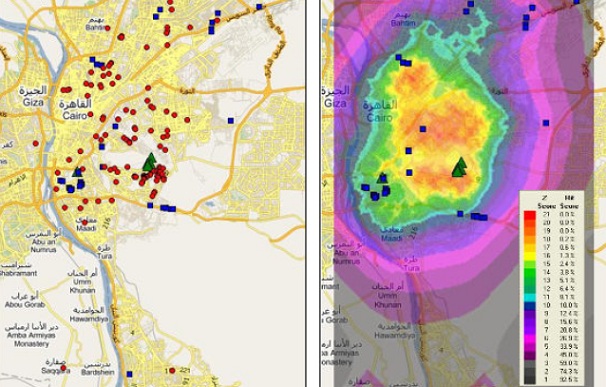Crime-Fighting Tactic Helps Hunt Infectious Diseases

No one equation exists for finding criminals, but law enforcement such as Scotland Yard has used a mathematics model to hunt in the most likely hiding places. Now the same tactic can help pinpoint the origins of infectious disease outbreaks that kill more people every minute than the most ruthless serial killers during their entire careers.
The inventor of the geographic profiling tactic, Kim Rossmo, a criminologist at Texas State University in San Marcos, teamed up with infectious disease researchers around the world. They tested his method to find sources of a classic 1854 cholera outbreak in London and recent malaria cases in Cairo, Egypt.
"It's enlightening to see the development for one field can be applied to another field," Rossmo told InnovationNewsDaily. "Now that we've also seen applications in biology and epidemiology, it gives you confidence that the algorithm is fairly robust in general."
Geographic profiling outperformed other spatial location methods when finding the sources of cholera and malaria, including the infamous Broad Street pump in London and the water habitats where malaria-carrying mosquitos bred in Cairo. The disease study was led by Steven Le Comber, an evolutionary biologist at the University of London.
Rossmo likes to compare geographic profiling to a rotating lawn sprinkler. It's tough to figure out where the next drop of water may fall from the sprinkler, but it's fairly easy to figure out where the sprinkler is based on the last few drops that fell.
Similarly, it's difficult to predict where crimes might happen even if you know where criminals live, but much easier to find the location of the criminal if you see the pattern of crimes.
The innovative tactic has worked for more than just studying crime or infectious disease. Rossmo has worked with shark biologists on patterns of great white shark attacks on seals off South Africa. Le Comber's lab has applied the tactic to the foraging habits of bats and bees.
Get the world’s most fascinating discoveries delivered straight to your inbox.
Similar assumptions seem to hold true in all these cases. Geographic profiling assumes that criminals take time and effort to travel, so that they will stay within a certain area near their home. But criminals also tend to avoid committing crimes close to home out of fear of being recognized, which creates a sort of buffer zone.
"Obviously, bats, bees and mosquitoes don't actively avoid areas in this way, but the buffer zone will also arise for geometric reasons, so the same method applies," Le Comber said in an email.
The study was detailed in the May 18 issue of the International Journal of Health Geographics.
This story was provided by InnovationNewsDaily, a sister site to LiveScience. You can follow InnovationNewsDaily senior writer Jeremy Hsu on Twitter @ScienceHsu. Follow InnovationNewsDialy on Twitter @News_Innovation, or on Facebook.

